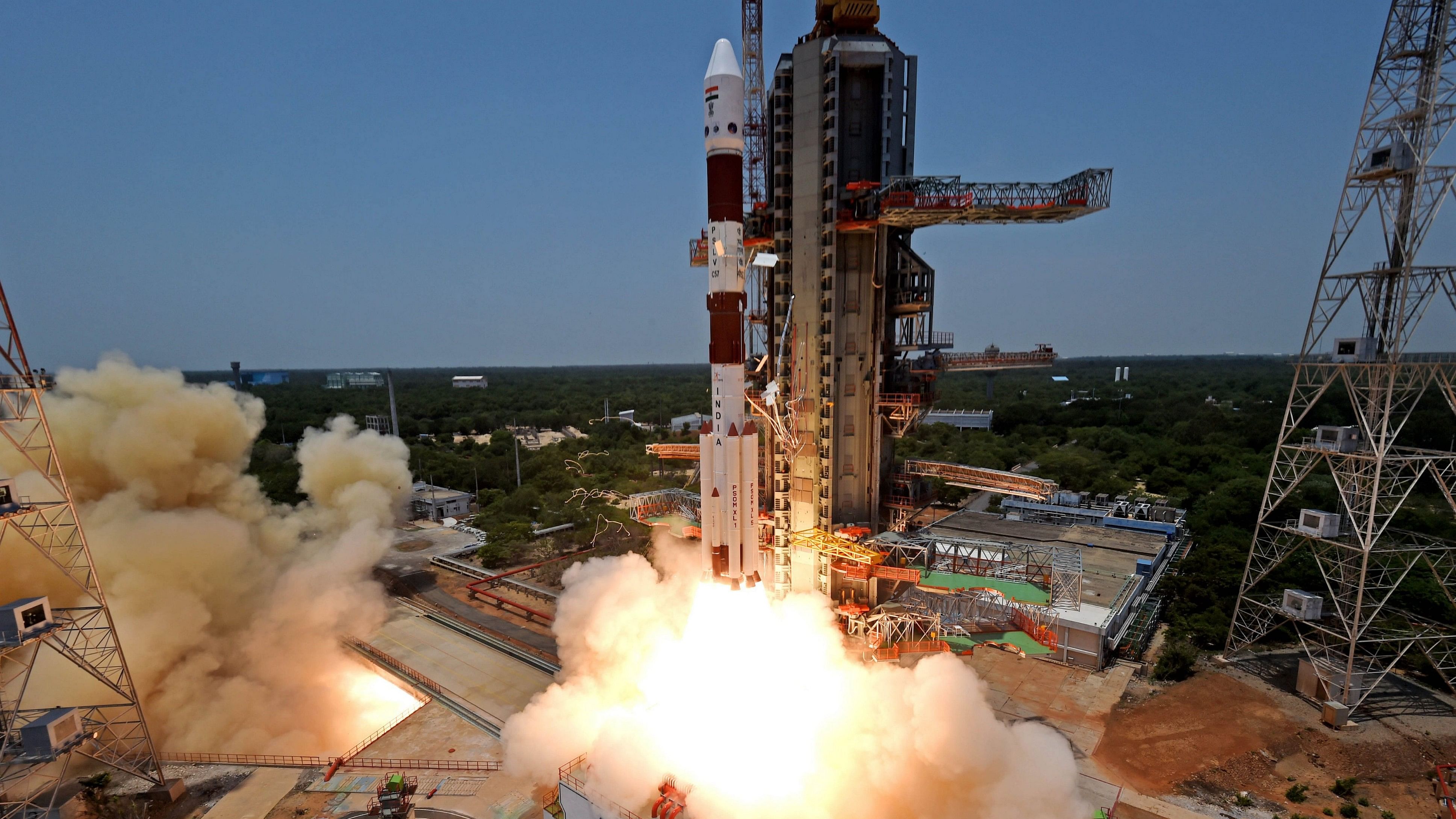
In this file photo, ISRO's PSLV-C57 carrying Aditya-L1, India's maiden solar mission spacecraft, lifts off from the launch pad at Satish Dhawan Space Centre, in Sriharikota.
Credit: PTI Photo
Bengaluru: The Plasma Analyser Package for Aditya (PAPA) payload onboard Aditya-L1 has successfully detected the impact of coronal mass ejections (CMEs) including those recorded during February 10-11. CMEs are massive eruptions of charged particles and magnetic fields from the sun’s outermost atmosphere, its corona.
The Indian Space Research Organisation (ISRO) said on Friday that the payload – an energy and mass analyser designed for in-situ measurements of solar wind electrons and ions in the low energy range – is “performing nominally”.
The two advanced sensors on PAPA – the Solar Wind Electron Energy Probe (SWEEP) which measures electrons and the Solar Wind Ion Composition Analyser (SWICAR) which measures ions – are also equipped to measure the direction of arrival of solar wind particles.
Aditya-L1, India’s first space-based observatory to study the sun, was launched on September 2, 2023. It was inserted into a halo orbit around L1, the first Lagrange point in the sun-earth system, on January 6. PAPA has been operational since December 12.
Data generated by PAPA revealed two CME events, on December 15, 2023 (a single event), and during February 10-11, 2024. A graphical representation of the observations, released by ISRO, showed an abrupt increase in total electron and ion counts during the December 15 event. The time variations align with the solar wind parameters and magnetic field measurements obtained from the Deep Space Climate Observatory and Advanced Composition Explorer satellites at the L1 point, ISRO said.
“In contrast, the observed variations in electron and ion counts during February 10-11, 2024 are the result of multiple minor events, with differences in the time variations of electrons and ions,” the space agency said.
Aditya-L1, from the L1 point located 1.5 million km from Earth, is studying various aspects of solar activities and their impact on solar weather including coronal heating and solar wind acceleration.
The continuous observations by SWEEP and SWICAR of solar wind electrons and ions have demonstrated performance on expected lines. ISRO said the observations emphasised the effectiveness of PAPA in monitoring space weather conditions and detecting/analysing solar phenomena.
The payload is developed by the Space Physics Laboratory and Avionics Entity of the Vikram Sarabhai Space Centre.